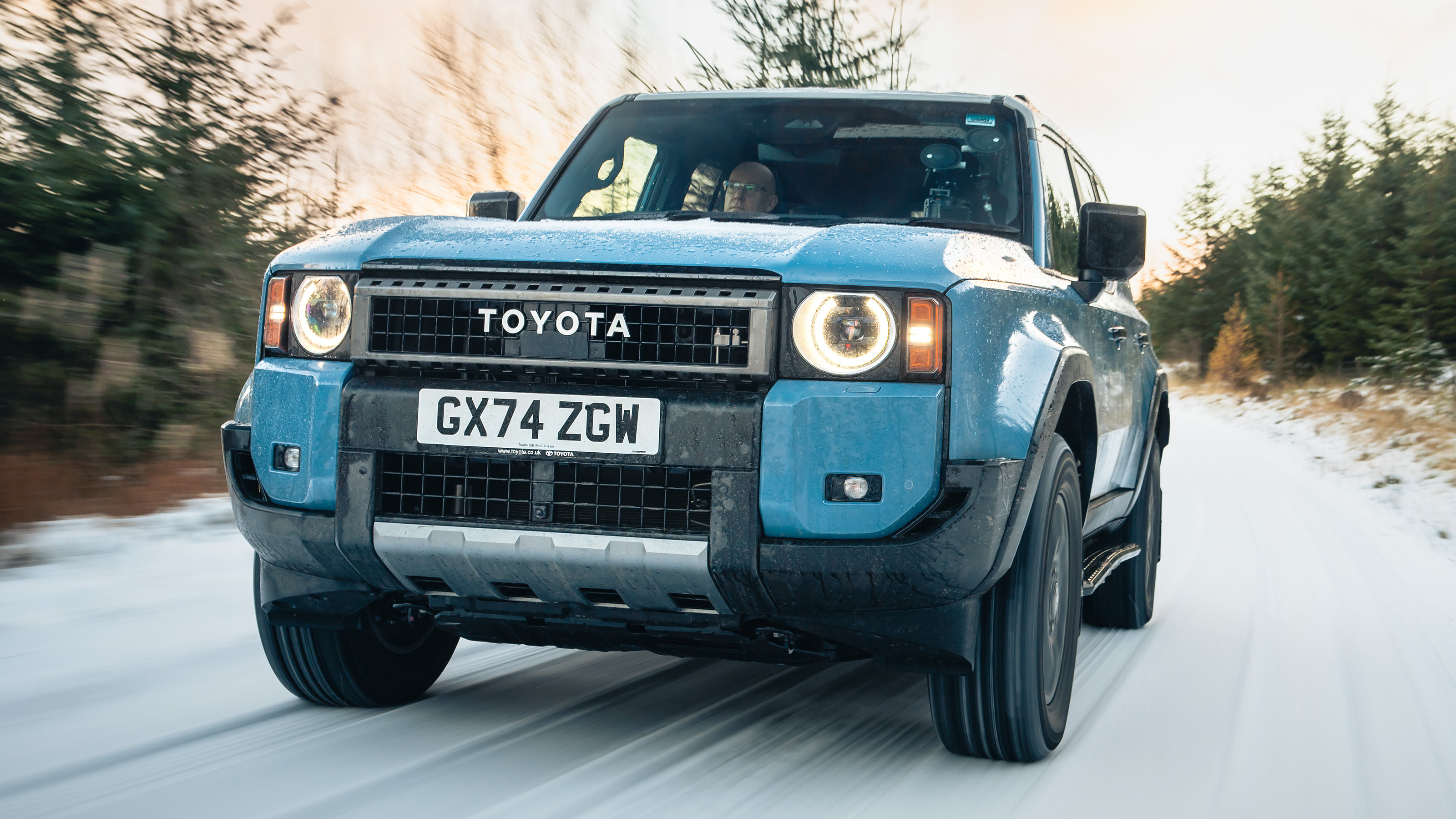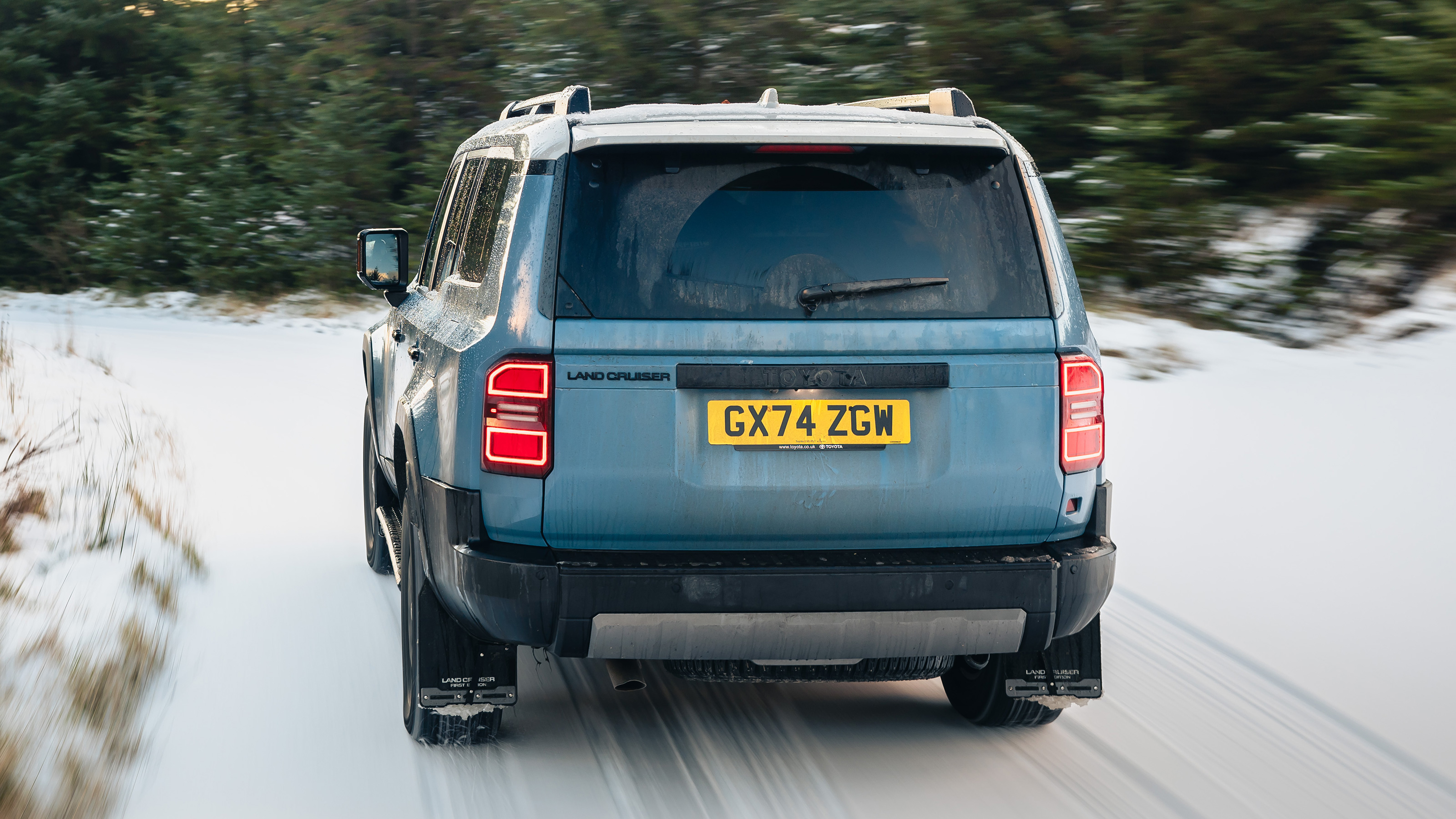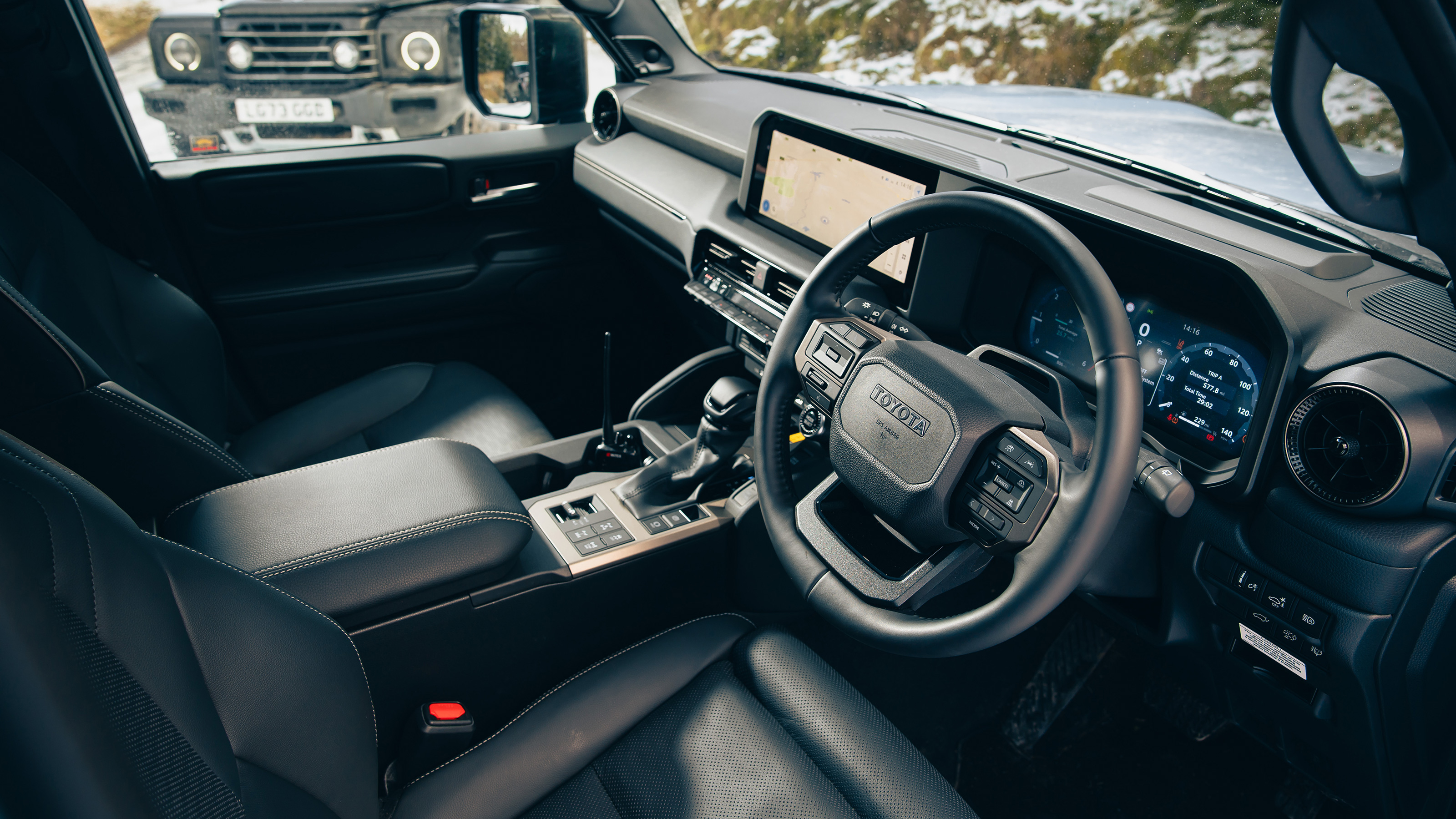
Driving
What is it like to drive?
The Land Cruiser’s on-road drawbacks are a legacy of its off-road competence. Let’s start there. Its traditional 4x4 construction, with a separate ladder frame chassis and beam back axle means it’s extremely durable, but it’s not great for on-road accuracy and response. The Land Cruiser is ponderous around corners, it tips in, you don’t have much feel for the limits or feedback from the chassis other than shudder from the heavy rear axle over rough surfaces. A Defender is more refined, comfortable and has more chassis poise.
Is the Land Cruiser noisy and unrefined then?
We didn’t say that. In fact as far as ladder framed cars go, this is really impressive. Toyota has worked hard on noise insulation and suspension refinement – and with commendable success. The primary ride is a bit bouncy, but that’s to be expected with this much travel and no adaptive dampers. But because the seats are comfortable, the driving position commanding and noise is well suppressed, you’ll have no trouble seeing off distance. Just be aware that the LC 250 has to work quite hard for its speed.
Why’s that? But first, why no adaptive dampers?
They are available in some markets, but not in European cars, so you can’t stiffen or soften the suspension. We don’t think you miss it. Air suspension – which the Defender has and would allow for height adjustability – isn’t available on any Land Cruiser. Not durable enough, apparently.
Coming on to the question of speed. The Land Cruiser is big, boxy and blunt. It’s also 2,330kg basic, more once you’ve added options such as the locking rear diff and extra boot seats. That 2.8-litre diesel is designed for torque and hard work, not power and performance. Acceleration is gentle, but insistent. The engine churns, the turbo whistles quietly away, and speed builds. There’s a bit of vibration to go with the noise, but it all feels in keeping with the car’s attitude. It would be somehow weird if it rode fluently and was whisper quiet. And probably a bit disconcerting.
How’s the eight-speed gearbox?
Way better than the old six-speeder. That was indecisive and sloppy. This is a much better decision maker, shifts more promptly and locks up its torque converter early so you don’t get that surging feel of a slipping clutch. There are also paddles to pull. You might not use them on-road, but off-road they come in very handy for helping to control speed and traction.
Could you daily it?
Yes, although it will require compromises. The electric power steering has over three turns between locks, yet the turning circle remains bulky, and because it’s less direct and responsive to drive, it feels even bigger on the road than it actually is (1,980mm wide).
However, you feel all but indestructible in this. Which is arguably both a good and bad thing. It’s less aggressive to other road users visually, and its laid back character rubs off on you. Just be warned about the driving assistance systems. Not even a Land Cruiser can get away without them these days. A button on the steering wheel disables most of them
What about when you get off-road?
That’s when the Land Cruiser is in its happy place. Suddenly all the drawbacks of driving it on-road are thrown into focus. With more work to do the suspension’s sponginess is gone. Now it begins to communicate – you feel exactly what each wheel is doing. And if it stops doing it, just twirl the mode knob press a button and traction will be resumed.
Unlike the Defender’s Terrain Response system, you still need to decide when to engage the diff locks and low range, but that’s part of the fun. However we found it decidedly difficult to get the Land Cruiser stuck in the first place, even when still in road mode and wearing more road-focused tyres. Ground clearance is impressive, but more than that there’s no structural shake or weakness and no squeaks or rattles from the trim. It feels incredibly together.
It can wade to 700mm, the gearshift paddles give you useful extra control, you won’t mind scratching up the flanks because they’re mostly plastic – and see how the bumper is sectioned up rather than a continuous piece? That’s so you can replace individual sections if they get damaged. It’ll tow 3,500kg (probably without noticing) and the Land Cruiser’s reputation means there will be a vast array of third party accessories to be had.
What would you take off-road, this or the Defender?
Personally we’d take this, because it has a greater sense of involvement and connection to the clanking bits underneath. The Defender is amazing at doing everything for you, it exudes competence, but Land Rover’s reliability reputation is deservedly poor, and fully raised up to its highest height the Defender is too stiffly sprung and tends to bounce over obstacles, rather than absorbing them.
The Land Cruiser is more engaging. And its reputation for reliability is second to none. Tackling the Outback or the Andes? Which one would you trust more? And if it can do that, it’s not going to have any trouble through your local ford, is it now?
Variants We Have Tested

Trending this week
- Car Review
BMW iX3







